
| Home | Butterflies | Dragonflies | Birds (media) | Flora & Fauna (media) | Observations | Species taxonomy |
| Mexican Species | Download Checklists | Links | My 5 Chickens | Other Photos | The Birding Program | About |
Bird photos, sounds and videos
| Ring-necked Duck (Aythya collaris) Ducks, Geese and Waterfowl (Anatidae) | |||||||||||||
| Halsbåndstroldand ~ Pato Pico Anillado ~ Ringand | |||||||||||||
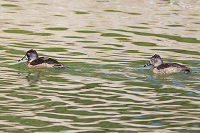
|
1433
(1 photos)
2011-12-04 Parque Héroes (Aguascalientes), Mexico
1cy male and probably 1cy female. The male to the left shows darker feathers on the head and the back than corresponding females. The female looks like the same as 1426, based on the white markings on the bill. |
||||||||||||

|
1432
(1 photos)
2011-12-04 Parque Héroes (Aguascalientes), Mexico
Adult male. Other than 1431. Appears more advanced in molt with cleaner flanks. On the other hand this one shows no sign of neck collar, but could be hidden behind other neck feathers. |
||||||||||||
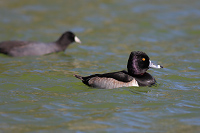
|
1431
(1 photos)
2011-12-04 Parque Héroes (Aguascalientes), Mexico
Adult male in terminating ecliptical/alternate plumage. The white spur is still weak, but otherwise the bird looks classical. |
||||||||||||
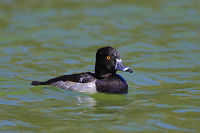
|
1430
(1 photos)
2011-12-04 Parque Héroes (Aguascalientes), Mexico
Adult male. Here showing the classical bill markings and head profile. Notice that the white spur on the flank is almost absent. Also notice the chestnut colored ring patch low on the neck. Apparently the species has been named after this. As the winter progresses it becomes even more prominent. |
||||||||||||
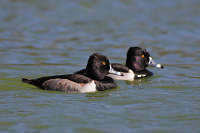
|
1429
(1 photos)
2011-12-04 Parque Héroes (Aguascalientes), Mexico
Adult males. The markings on the bill are rather alike and characteristic for the males of the species. Notice the different head shape, where the one behind shows the classic profile with the top point at the rear of the head. The eye color is bright yellow orange on old males, but variation occurs as it is obvious here. The brownish feathers on the flank of the front bird, are reminiscents of the eclipse/alternate plumage of the adult male as I see it, rather than being an indication of a young bird. |
||||||||||||

|
1427
(1 photos)
2011-12-04 Parque Héroes (Aguascalientes), Mexico
Female. Apparently difficult to determine age of females. |
||||||||||||
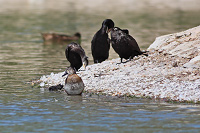
|
1428
(1 photos)
2011-12-04 Parque Héroes (Aguascalientes), Mexico
Female. Chest examination. |
||||||||||||
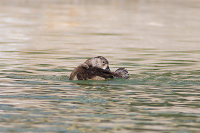
|
1425
(1 photos)
2011-12-04 Parque Héroes (Aguascalientes), Mexico
Female. Likely 1cy due to missing characteristic bright line behind the eye. The eye being rather dark is also an indication of age. |
||||||||||||
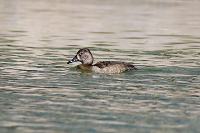
|
1426
(1 photos)
2012-12-04 Parque Héroes (Aguascalientes), Mexico
Same as 1425. Female. |
||||||||||||
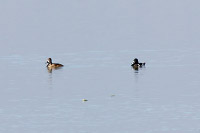
|
2233
(1 photos)
2016-03-31 Presa la Vega (jal), Mexico
Male and female. The strong white band on the female's bill indicate an adult. |
||||||||||||
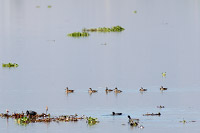
|
2232
(1 photos)
2016-03-31 Presa la Vega (jal), Mexico
Females or young birds. |
||||||||||||
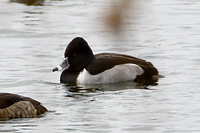
|
2920
(19 photos)
2019-01-12 Søndersø (sjælland), Denmark
Adult male. Unmistakable in breeding plumage, and easily separated from the sister species, Tufted Duck, as seen in these photos. Rare visitor in Denmark, even though this bird has returned to Søndersø during the last 5 or 6 winters. Despite of this, the bird became a new DK species for me. A slow twitch indeed. Rare |
||||||||||||